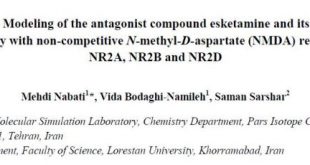Arketamine for Major Depressive Disorder (MDD) treatment
Major depressive disorder (MDD) is one of the most infamous and oldest medical conditions determined by disturbances of cognition as well as neurovegetative and psychomotor functions. The World Health Organization estimates the number of individuals afflicted by MDD to be well over 300 million worldwide. Despite the fact that the most commonly used antidepressants are generally effective in managing MDD, still about two out of three patients show resistance to pharmacotherapy or are at the risk of relapsing. This condition is recognized as treatment-resistant depression (TRD) which is defined by inadequate response in patients following adequate therapy with antidepressants. Furthermore, the full beneficial effects of antidepressants are usually witnessed after weeks of therapy with antidepressants. Consequently, targeting alternative signaling pathways to manage TRD as well as achieving more rapid responses have become areas of interest in designing new generations of antidepressants. A body of evidence associate many aspects of the glutamate system with the pathophysiological pathways involved in depression. For instance, elevated levels of glutamate was observed in plasma, cerebrospinal fluid and the brain of patients afflicted with MDD and gene expression of N-methyl-D-aspartate receptors were shown to be altered. NMDA receptors consist of two NR1 and two NR2 subunits (and NR3 less frequently expressed). NR2 subunits are categorized into NR2A–NR2D and NR2A and NR2B are recognized as the most common subunits in the central nervous system. In this regard, targeting glutamate system and NMDA receptors seems promising in management of MDD. More recently, ketamine, an NMDA receptor antagonist, has been considered as a fast acting antidepressant in treatment of TRD. Ketamine is a racemic mixture of two enantiomers R-ketamine and S-ketamine. Efficacy and safety of S-Ketamine has been extensively investigated in various studies and the intranasal formulation was granted FDA approval in 2019. However, more recent studies have provided evidences suggesting more potent and longer-lasting antidepressant properties in R-Ketamine compared with S-Ketamine. Furthermore, racemic Ketamine and S-Ketamine consumption is associated with dissociative and psychotomimetic symptoms which are absent in R-Ketamine. As a result, R-Ketamine could be considered a potentially more useful antidepressant than racemic and S-Ketamine and further exploration of this drug’s properties seems necessary. Previous studies have determined S-Ketamine to possess up to four times more affinity towards NMDA receptors. The general consensus is that the R isomer of Ketamine mainly exerts its antidepressant effects via binding and interaction with Sigma receptors which are modulatory proteins consisting of two Sigma 1 and Sigma 2 subunits and are believed to mediate antidepressant activities. As a result, R-Ketamine’s interaction with NMDA receptor has been deemed non-existent or inconsequential.
In 2019, Dr. Mehdi Nabati and Dr. Vida Bodaghi studied the stability and reactivity properties of the antidepressant molecule arketamine and its binding modes to the N-methyl-D-aspartate receptor (NR2B). Their investigation showed the molecule is a high stable compound and it has low reactivity against the oxidant and reductant agents. On the other hand, the NR2B residues containing Gly [A] 128, His [A] 127, Tyr [A] 282, Gly [A] 264, Asp [A] 265, Met [A] 132 and Ser [A] 131 are the major amino acids participating in the arketamine-NR2B complex formation.
For more information about arketamine as a novel drug for major depressive disorder (MDD) treatment, please read the following article:
 Iranian Chemist شیمیدان ایرانی
Iranian Chemist شیمیدان ایرانی
